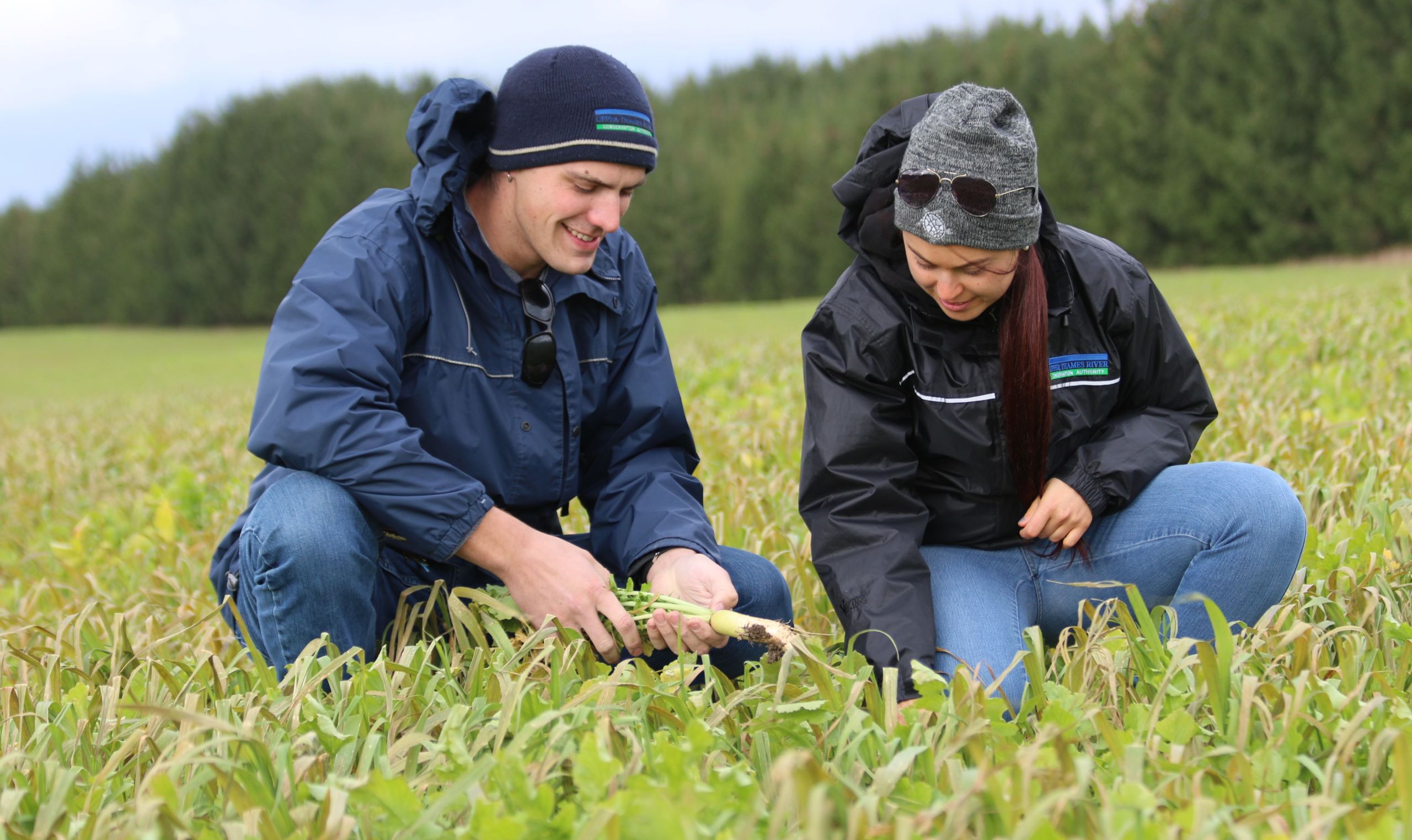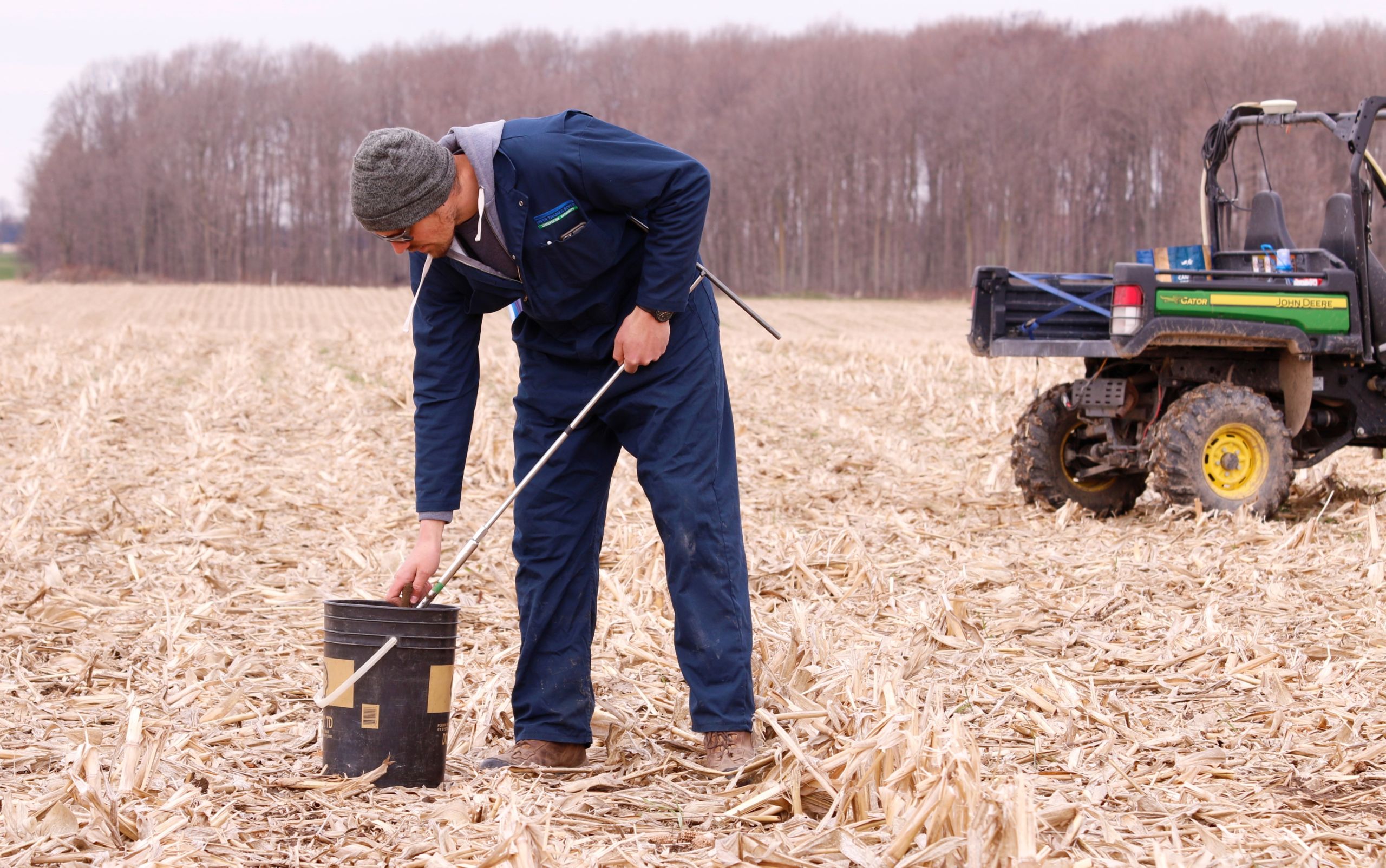Cover Crop Research (UTRCA Weekly, February 1, 2021)
The UTRCA’s Conservation Services staff work with farmers across the watershed to help them implement a variety of agricultural best management practices. Since 2015, we’ve been working on a cover crop research project with approximately 20 landowners in the upper Medway Creek watershed, north of London. Thanks to new funding, we’ve been able to expand these efforts recently.
Farmers can grow cover crops both before the main crop is planted and after it is harvested. Many different plant species can be used as cover crops, each providing their own suite of potential benefits. They’re thought to play a role in improving water quality and soil health. Other benefits can include fewer weeds, less soil erosion, and increased organic matter. Our project is also looking at the impact on crop yields.
Currently, we are monitoring adjacent subwatersheds within the project area, one with cover crops and one without, to track the changes in water quality. While there are several cover crop research sites in Ontario, this is the only project looking at the impact of cover crops at the subwatershed scale.
Mike Yeo and his family are farmers in the upper Medway who got involved in the cover crop project last year. Mike decided to plant a cover crop after hearing from neighbouring farmers, who said they wouldn’t go back to farming without cover crops, after planting them over several seasons and seeing the benefits.
For their first year, the Yeos started by planting oats late last summer and leaving them in the field through the winter. In the spring, they plan to plant beans into the oat cover crop. Mike is hoping this will result in better soil quality and, as a result, less use of fertilizer and other inputs. As he says, “There aren’t many things that can help our bottom line and improve the environment at the same time.” We’ll evaluate the impact on yield by monitoring a check strip on the property, which provides a side by side comparison.
Find out more about cover crops, funding opportunities, and the Upper Medway project:
- Apply for funding and receive technical advice
- Upper Medway project (photos)
- Cover crops and water quality (photos)
- Agricultural BMPs – cover crops
Working with supportive local farmers has been a key to the success of the cover crop project. Typically, we have tailgate meetings with the participating farmers twice a year to plan for the coming year, share results, and compare successes. In between those meetings, staff visit the project sites to collect data and keep in touch with the landowners. The farmers decide which cover crop to plant, but they are all motivated to achieve a goal. Some leave the residue on their fields to improve soil quality or feed it to their livestock. Finding the best way to incorporate cover crops into the overall farm operation is the key to making them work.
The project’s results will help to develop a best management practice that farmers can easily implement to improve water quality and soil health, and will help the UTRCA reach its environmental target of improving water quality in every subwatershed.
This project was undertaken with the financial support of the Government of Canada through the federal Department of Environment and Climate Change.
Ce projet a été réalisé avec l’appui financier du gouvernement du Canada agissant par l’entremise du ministère fédéral de l’Environnement et du Changement climatique.
This project was funded in part through the Canadian Agricultural Partnership (the Partnership), a five-year federal-provincial-territorial initiative.
Contact: Tatianna Lozier, Agricultural Soil & Water Quality Technician



